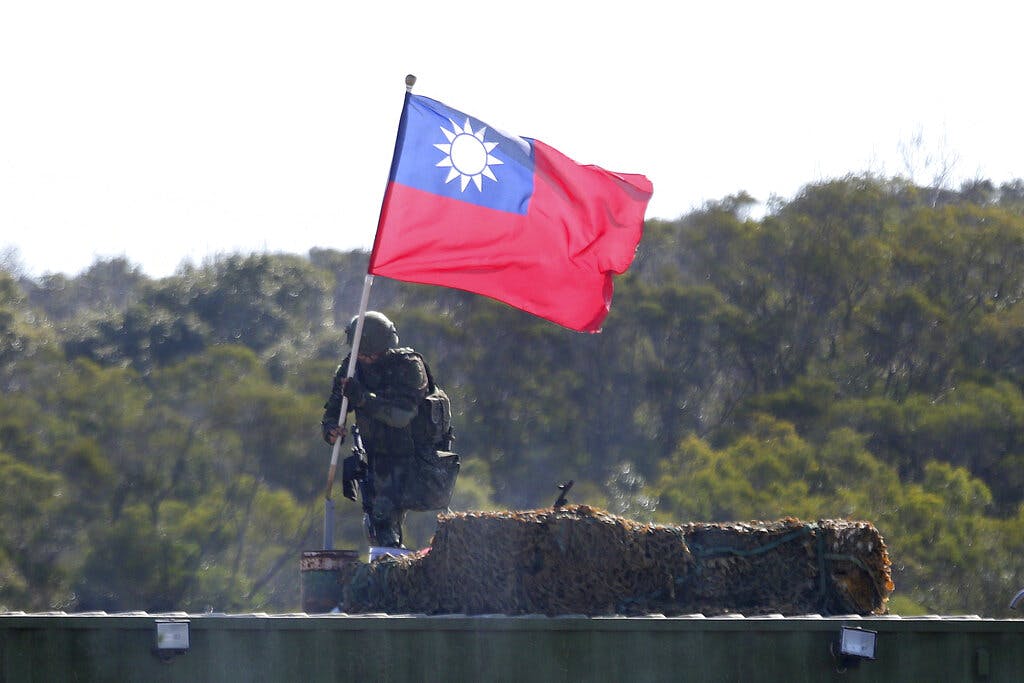Beijing Beware: Free China’s ‘Porcupine Strategy’ Will Make Taiwan Invasion Nigh Impossible
Any attempt by Red China to force this issue militarily could produce the most spectacular amphibious failure since the disastrous Athenian siege of Syracuse.

There has for some time been a good deal of flippant talk about a Communist Chinese invasion of the Republic of China on Taiwan, as if that would be a simple military undertaking. It seems to be inadequately appreciated that Taiwan has thought of little else for many years, and is, unlike Ukraine, a very prosperous and technologically sophisticated country that is armed to the teeth with the most advanced American weaponry, and has plotted out a defense in depth that is called its “porcupine strategy.”
Though it is probably accidental, “porcupine” is the word applied to Switzerland by Adolf Hitler in 1941, when, after careful analysis by the German General Staff, he concluded Swiss defenders would inflict a much larger number of casualties on a German invasion force than could possibly be justified by the occupation of the country. (It can be lamented that more recent Western strategists did not apply the same test to Afghanistan.)
Comparisons with Ukraine are inapplicable, other than the fanatical determination of the defenders. Most obviously, Taiwan is not only an island but the Formosa Straits are three to four times as wide as the English Channel from the southern British ports to the beaches of Normandy. The People’s Republic of China would have no choice but to attack amphibiously as they could not possibly imagine success with fewer than 500,000 combat soldiers and no force remotely as large could be parachuted onto Taiwan.
A strike force of 500,000 would probably have to be supplemented by a follow-up force at least as large, all conveyed in a huge armada of slow and vulnerable craft. Taiwan has been supplied with the precise ground and air-launched missiles that the Ukrainians have used to such deadly effect in the Black Sea, including the sinking of the Russian flagship, the heavy missile cruiser Moskva.
Taiwan has a front-line Air Force of about 300 of the latest fully equipped fighter and interceptor aircraft that along with shore batteries could rain a dense and prolonged fire of missiles upon any invasion fleet. Such a fleet, even in the best of weather, would plod through open water for at least ten hours. They would be sitting, or at least slowly moving, ducks throughout that journey. It brings to mind the conclusion of one of Churchill’s Demosthenean addresses in the autumn of 1940: “We are still awaiting the long-promised invasion; so are the fishes.”
There is no sign that the People’s Republic possesses any such invasion force, though they could certainly build and launch one quite quickly, but they could not hide it from Taiwanese intelligence. They could provide very heavy air cover for it, but they would have no possible defense against an overpowering volume of ground and sea-launched surface-to-surface as well as air-to-surface missiles.
Whatever force from the mainland, if any, survived such an assault, would encounter a withering close-in defense. Taiwan has a very large fleet of small assault boats equipped with anti-ship missiles that would sortie from small fishing ports all along the western shore of the island.
Only 14 of Taiwan’s western beaches would be suitable for an amphibious landing and the unfriendly weather and waters restrict the invasion season to April and October. Taiwan has massively built up elaborate underwater defenses at every conceivable invasion site, including very extensive underwater mines and “seawalls of fire” which push up immense walls of flame fueled by gas that is pipelined underwater and ignited from shore at the opportune time.
If any significant invading force got ashore, it will be greeted by the highly trained and superbly equipped Taiwanese army of 130,000 combat soldiers, reinforced by a well-trained and well armed militia of several hundred thousand soldiers. These units are all highly mobile but would throughout the island be deployed to fortified positions. Taiwan well meets its self-description as a “porcupine.”
Taiwan has evolved unrecognizably since Chiang Kai-shek fled across the Formosa Straits with the remnants of his defeated Kuomintang army at the unsuccessful end of the Chinese Civil War in 1949. Taiwan remained a dictatorship for 40 years but has matured into a very well-functioning and highly motivated democracy. It started out at about the same time as Israel and South Korea: all very poor and beleaguered countries 70 years ago, and all are now very prosperous and endowed with very sophisticated economies.
Taiwan produces 90 percent of the high quality chips in the world, and it is not a country that could be casually allowed to be militarily overrun by the People’s Republic without drastic damage to the geopolitical standing of the West, and of Japan and America in particular. It is 50 years since the Shanghai agreement between President Nixon and Premier Chou En-lai which agreed on the principle of one China but also on the assurance that the reunification of Taiwan with the mainland would not be by force.
The People’s Republic has been flagrantly threatening force by a policy of intimidation: violations of airspace, belligerent utterances from Beijing, threats to restrict trade and traffic, and a drumbeat of similar measures.
There is no sign that Taiwan will yield to any such pressure. It has been an independent state for 73 years, more than twice as long as Ukraine, and with absolutely unambiguous success. After the shambles in Afghanistan, and after American intelligence completely misjudged Ukraine, with the chairman of the joint chiefs assuring the Congress at the outset that Kyiv would fall in a few days and the whole country within a few weeks, the Biden administration, and the president himself, seem to recognize that the Formosa Straits really is a redline that must not be crossed.
Unless China can bully the United States and Japan into putting Taiwan over the side, and this is hard to imagine even for the most pessimistic Biden-watcher, there is practically no chance for the People’s Republic to achieve anything more than possibly a slightly more respectful attitude from its Taiwanese relatives. Any attempt to force this issue militarily could produce the most spectacular amphibious failure since the disastrous Athenian siege of Syracuse 415 years before the common era.

